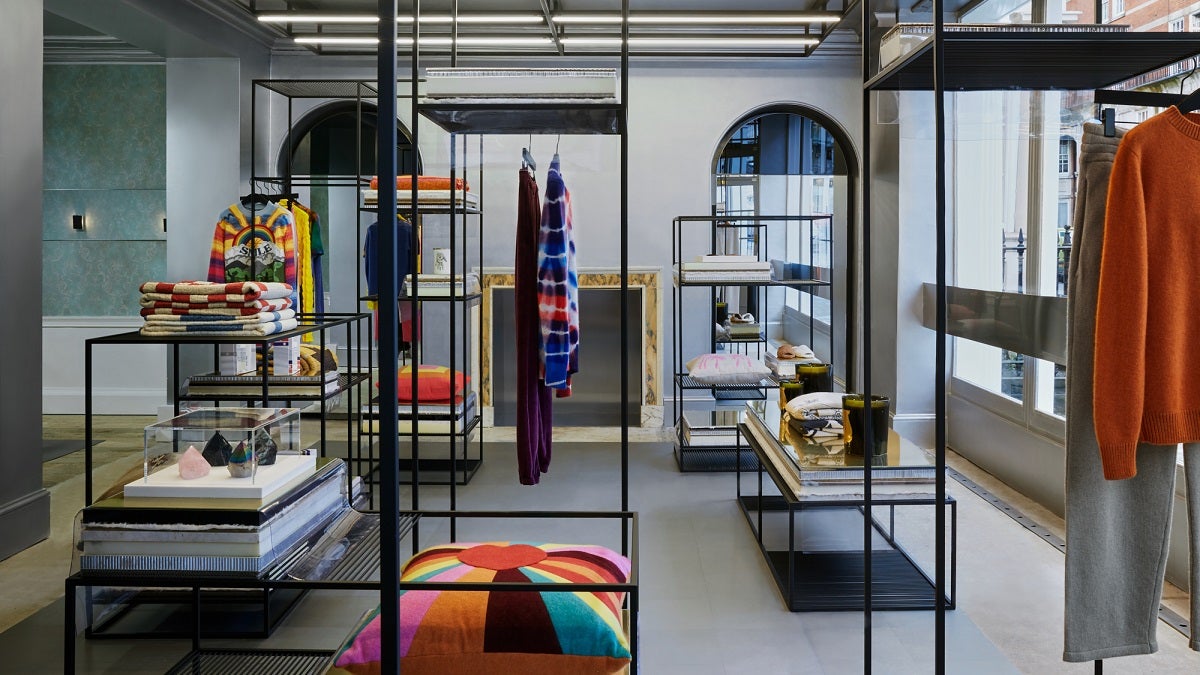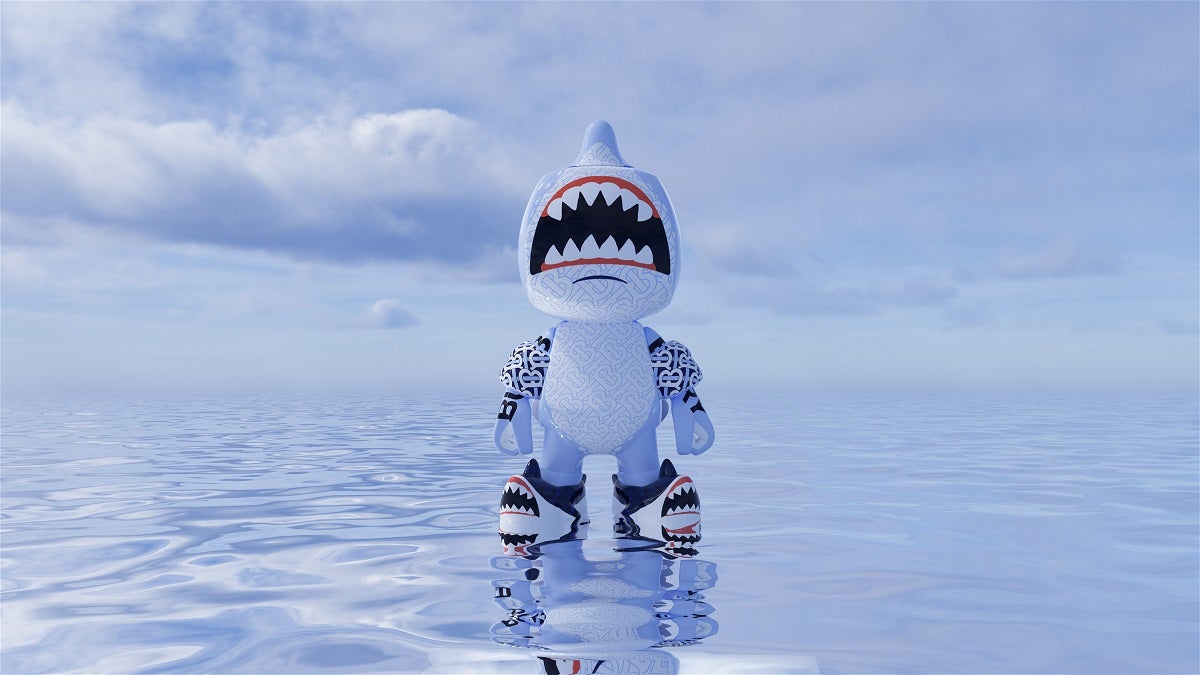
The pandemic accelerated the shift to online for luxury brands. As they seek new ways to connect with consumers in this digital world, one priority is clear: the customer experience.
Poised to reshape the industry, Generation Z is the new frontier of tomorrow’s luxury market. By 2035, Gen Z could make up 40% of all global personal luxury goods purchases, up from only 4% today, according to analysts Bain & Company.
To engage with these customers of the future, brands are experimenting with digital technology. Some are using augmented reality (AR) to enhance ‘in real life’ (IRL) experiences. Other are entering the metaverse with gaming, digital avatars and virtual goods enabled by non-fungible tokens (NFTs).
With 90% of Gen Z classifying themselves as gamers, it’s no wonder luxury brands are looking to innovative digital tech as a clear way to connect with an audience that holds big spending power. Seeking a seamless and personalised online and offline retail journey, the new generation of luxury consumers are focused on experience.
“The boundaries that may have once divided our online and offline worlds are rapidly blurring and in turn, consumers are moving seamlessly between this idea of one’s digital self and their physical lives,” says Rachel Waller, Burberry’s global VP of channel innovation. “They’re actively investing in their digital lifestyle, not only through traditional gaming, but also through new spaces like NFTs, which presents an exciting opportunity for us to engage and inspire communities in a way that we couldn’t with other channels.”
Here are five major trends that will shape the luxury retail industry in 2022 and beyond.
1. NFTs
Have you come across the virtual sneaker that made over $3m (£2.2m) in sales in just 5 minutes, or the NFT artwork that fetched $69.3m in an online auction at Christie’s? Welcome to the world of NFTs, one of this year’s biggest success stories.
NFTs are virtual products that are stored on blockchain and auctioned off.
Each is one of a kind, creating a sense of exclusivity that perfectly aligns with the luxury brand experience. “As ‘luxury goods’ become more ubiquitous and easier to access, consumers are turning towards unique, non-reproducible experiences to fulfil a desire for the exclusive,” says Scott Clarke, head of luxury retail at digital consultancy Publicis Sapient.
The NFT market is skyrocketing, seeing market cap growth of 1785% in the first three months of 2021 alone.
In the summer, Burberry launched an NFT collection in digital multiplayer game Blankos Block Party in partnership with Mythical Games. The digital collection marked the first time that customers could authentically own something from the brand that wasn’t physical, Waller says.
Burberry’s been pleased with the response. Its digital vinyl toy, Sharky B, sold out in a record time of less than 30 seconds, while a Burberry jetpack sold out in under two minutes. The luxury brand also saw positive community engagement, with high volumes of online conversations about the partnership, as well as large numbers of reposts, shares and likes.
“This reinforces just how impactful it is to lean into cultural moments and show up for our customers in the spaces they love,” Waller says.
Catherine Hope is executive vice president, creative and entertainment at Sunshine, a brand consultancy for clients like Balmain, Harrods and Jimmy Choo. “Beyond generating new revenue streams for luxury retailers, NFTs open the door to the fundamental hallmarks of customer experience: story and meaningful relationships,” she says.

2. Gaming
Gaming has become a major marketing opportunity for luxury brands over the past year, offering a rapidly growing channel to engage with younger, international, digitally native consumers. The trend is set to continue into 2022 and beyond, with many of the big fashion houses leading the way.
“It’s clear that luxury brands that once purely thrived off a feeling of exclusivity are now making a conscious effort to make themselves more accessible and relevant to today’s consumers,” says Rosh Singh, managing director at UNIT9, a brand innovation partner that has worked on emerging tech marketing projects with the likes of Burberry, Hugo Boss and Porsche.
Research firm SuperData has revealed that digital game spending is forecast to reach $129bn this year, up from $62bn in 2015. Forms of gaming both inside and outside the metaverse offer luxury brands the chance to embrace a more playful attitude. In September, Balenciaga announced a new creative partnership with online gaming platform Fortnite, the first time in Fortnite’s history that it has chosen to work with a luxury brand.
Within the game, virtual Balenciaga ‘skins’, or outfits, are available via a virtual store. They also present lucrative, new commercial opportunities for luxury brands.
Balenciaga also designed a limited-edition series of physical products, available in stores and online, a nod to the growing trend for matching real-life purchases with a digital twin.
According to shopping platform Lyst, 24 hours after the release of the physical capsule Balenciaga and Fortnite collection, searches for ‘Balenciaga x Fortnite’ spiked 72%, while demand for ‘Balenciaga’ increased 49%.
This follows on from Balenciaga’s iconic video game launch to showcase its Fall 21 collection, where it presented the new collection within a video game designed especially for the season.
3. Augmented reality
AR technology allows brands to superimpose digital content over a real-world environment. For multichannel luxury retailers, it’s a great way to help bridge the gap between the digital and physical, elevating the overall shopping experience.
New AR technology in store, such as smart mirrors, allows customers to interact with luxury products and rapidly gather relevant information such as price, components, or origin.
Earlier this year, luxury ecommerce platform Farfetch opened its new flagship Mayfair boutique Browns Brook Street, which “blends exceptional service with technology to create a seamless and connected customer journey”, according to the company. Using the Browns app in-store, interactive mirrors in the dressing rooms offer styling suggestions or suggest complementary products, while customers can virtually try on new items either in store or at home.
Innovative technologies are [helping to provide] consumers with differentiated and unique experiences that deepen their connection with luxury brands
Sandrine Deveaux is Farfetch’s executive VP, future retail. She says AR is crucial in the physical store. “It is one of the technologies that will allow the store to serve as a media outlet for the brand and gives customers a reason to visit, engage and immerse themselves in brand experiences.”
Snapchat, the largest Augmented Reality platform, has introduced shoppable AR, a new way to invite customers to try on products from the comfort of their own home. It says that over 80% of its 265 million daily active users engage with AR every day.
For luxury brands, AR portals on Snapchat are a great way to unlock exclusive content and provide VIP treatment to younger customers. “Ralph Lauren’s virtual flagship store, accessed via an AR portal on Snapchat, is a great example, allowing fans to be transported behind the scenes before a performance by Chance the Rapper,” says Singh.

4. Artificial intelligence
The ultimate luxury experience is completely tailored to the individual. There’s no better way to do this than by using artificial intelligence (AI).
Intelligent, data-driven innovation will allow luxury consumers to feel seen and heard, explains Singh. For example, AI could pair a shopper with their perfect product, or use ‘deepfake’ techniques to create personalised messages, opening a direct dialogue with consumers.
Chinese retail group Alibaba is a world leader in AI or ‘smart retail’. “Being a country of mobile-first consumers, luxury customers in China demand the same custom-tailored experience and sense of exclusivity online as they would in a physical retail environment,” says Janet Wang, head of Alibaba’s Tmall Luxury division.
AI allows the ecommerce giant to improve the overall experience for consumers, Wang says. For example, applying the technology to livestream broadcasting online, enabling real-time translation in 214 languages.
“Innovative technologies are constantly helping to provide consumers with differentiated and unique experiences that deepen their connection with luxury brands,” she explains. “It’s less of a direct sales process. Instead, consumers get rich content and enriching experiences.”
5. Cryptocurrencies
Luxury brands are beginning to offer new cryptocurrency payment systems, such as Bitcoin, Ethereum and Litecoin. It’s part of an effort to meet the demands of young, international shoppers.
Ricardo Guadalupe, CEO of Swiss watchmaker Hublot, has called virtual currencies “the future”. The brand is looking to accept payment in Bitcoin and other cryptocurrencies online by 2022. It dipped its toes into digital currency with the launch of the Big Bang Meca-10 P2P, a limited-edition watch collection which was available exclusively to buy using Bitcoin.
Consumers are moving seamlessly between this idea of one’s digital self and their physical lives
Bologna-based leather goods brand The Outlierman specialises in luxury driving accessories. Earlier this year it unveiled a new cryptopay system, which it says provides a convenient alternative payment method for those who use cryptocurrency.
In addition to offering new payment methods, cryptocurrencies can be used to connect with and reward fan communities. The payment options are also trickling down to the high street. In November, womenswear retailer LK Bennett announced a payment partnership with LSE-listed fintech company Mode, which enables customers to make instant payments online and be rewarded in Bitcoin.
The new wave of luxury shoppers – millennials, HENRYs (High Earners Not Rich Yet) and Gen Z – aren’t confined to the luxury industry. But luxury is leading the way in responding to these consumers, using new tech experimentation and innovation in a way that resonates with them.
“The luxury sector has proven they’re not afraid to take a risk by using this technology to become some of the first out there to create new, exciting experiences that audiences haven’t seen before,” Singh says. “We’re likely to see these trends trickle down through other sectors as they look to luxury’s pioneering success.”

The pandemic accelerated the shift to online for luxury brands. As they seek new ways to connect with consumers in this digital world, one priority is clear: the customer experience.
Poised to reshape the industry, Generation Z is the new frontier of tomorrow’s luxury market. By 2035, Gen Z could make up 40% of all global personal luxury goods purchases, up from only 4% today, according to analysts Bain & Company.
To engage with these customers of the future, brands are experimenting with digital technology. Some are using augmented reality (AR) to enhance ‘in real life’ (IRL) experiences. Other are entering the metaverse with gaming, digital avatars and virtual goods enabled by non-fungible tokens (NFTs).


